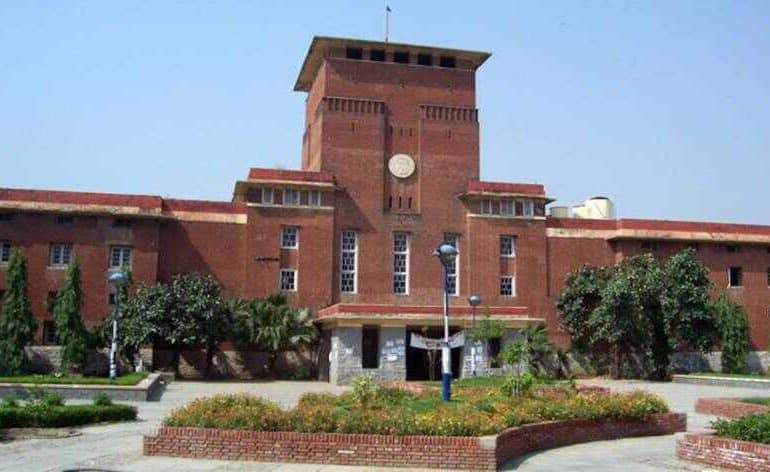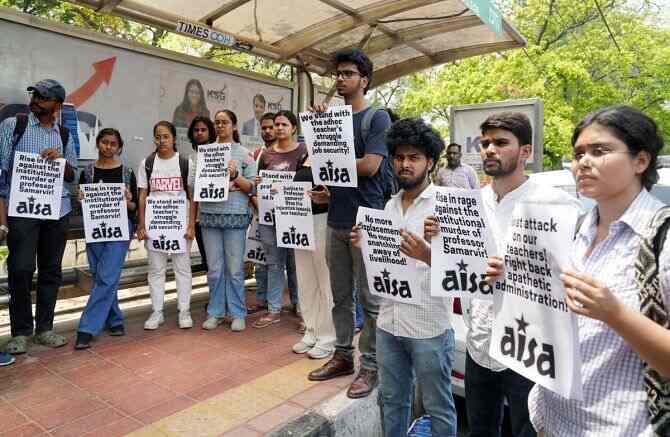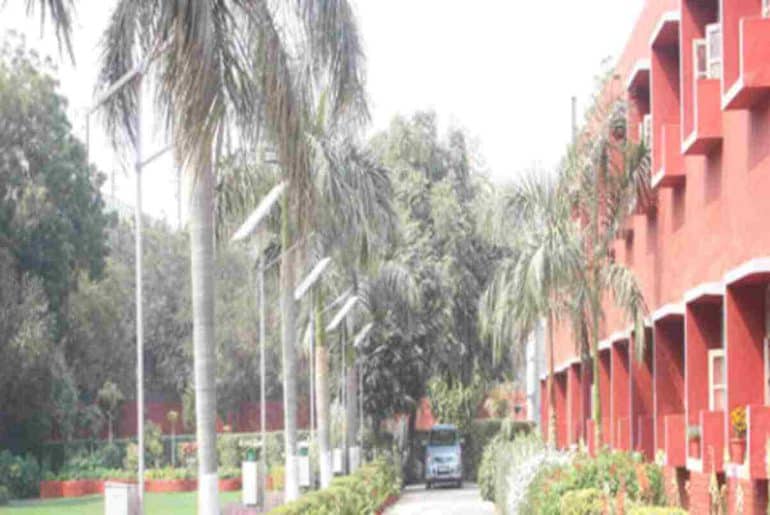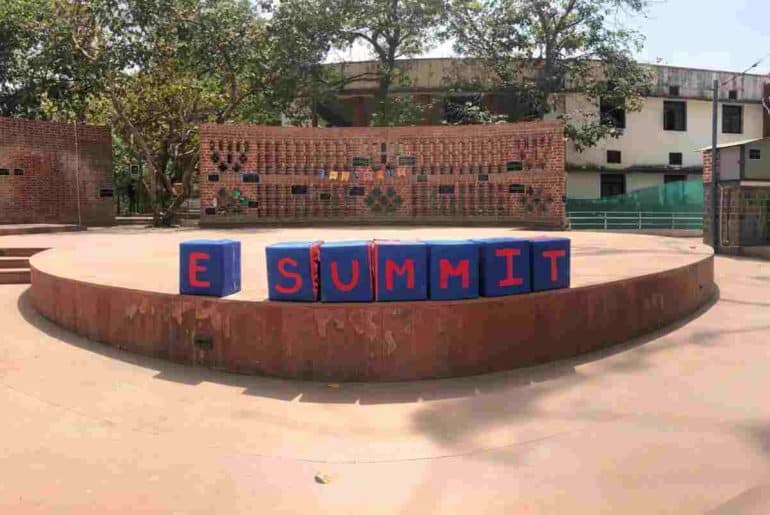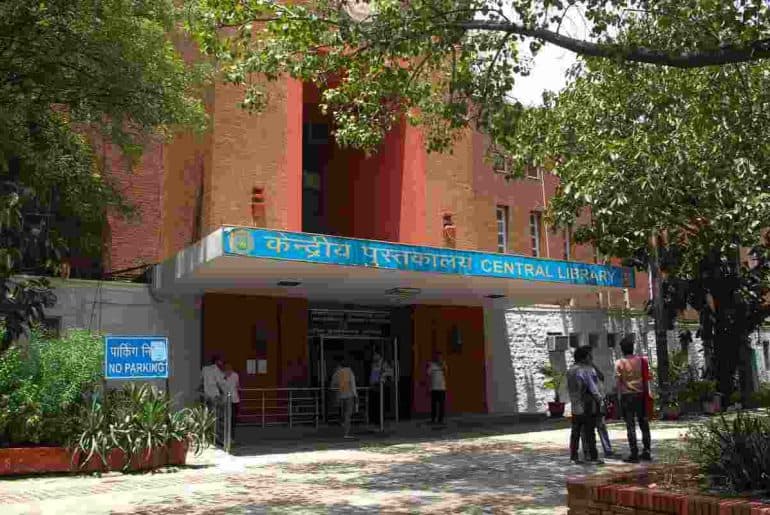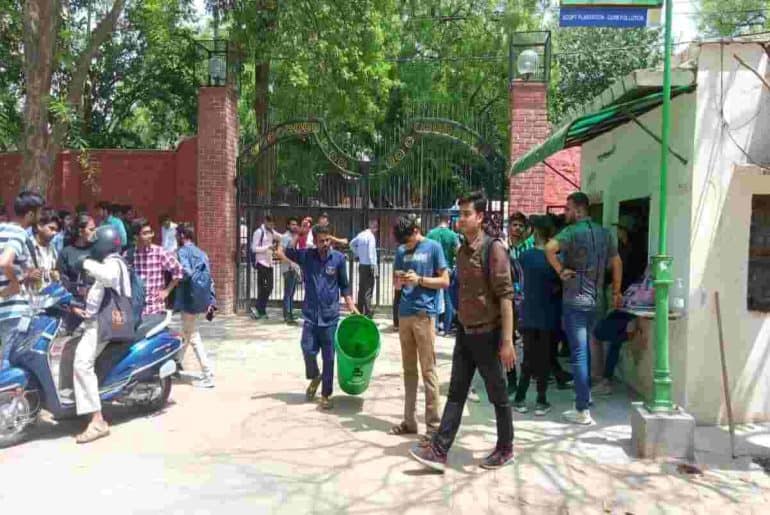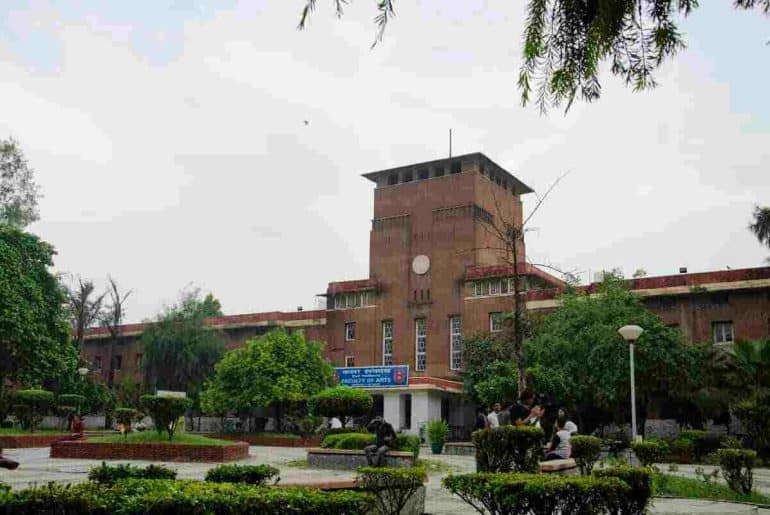The absorption of temporary teachers initiated last year has been heavily scrutinised for being unjust and highly opaque, post the death of a DU professor who, after years of service at Hindu College, was told to vacate his position. This has sparked several protests and questioned the credibility of the recruitment process.
The suicide of a 33-year-old former Delhi University ad-hoc professor, Dr. Samarveer Singh, has sparked student and teacher-led protests throughout campuses. The deemed “institutional murder” of the professor hailing from Barna, a small district in Rajasthan, has led many to question the level of transparency and fairness in the system of inducting permanent faculty into central universities. Professors view this as an assault on their right to employment and dignity, while students have expressed great concerns and discontentment at the loss of a talented pedagogue and the unjust removal of plenty of other immensely competent academicians.
Professor Singh died on April 26, allegedly by suicide. His body was found hanging in his room in a rented apartment in outer Delhi’s Rani Bagh. As per police reports, empty liquor bottles and cigarette packets were found in the room. No suicide note was found. He was staying put in the accommodation with two of his cousins.
“The top floor of his house has two rooms. One of the rooms was locked. First, the mesh of the iron door was cut, and then the wooden door was broken. We took him to MV Hospital, where he was declared dead on arrival.” – Harendra Singh, Deputy Comissioner of Police (DCP)
Dr Samarveer, who had been working as an ad-hoc faculty member in the philosophy department for the past six years at Hindu College, was one of the many professors who were being displaced after the interview rounds for the recruitment of permanent faculty at Delhi University that started in September 2022. Despite having done his master’s from Hindu College itself, completing an M.Phil. degree, being enrolled in DU for a PhD, and having had the experience of teaching at Hindu College for the last few years, Professor Samarveer was mercilessly, in an utterly unjust manner, told to vacate his office merely on the basis of a highly opaque, unfair interview.
“It is very unfortunate and upsetting, and we are all shocked. Across colleges, the recruitment process is currently underway, and selection committees are holding interviews. Even though he had been associated for quite some time, he could not be regularised. The displacement happened in the first week of February, and he was asked to look for other opportunities. However, we had adjusted him for some time, but after that, it was not possible”.- Prof. Anju Srivastava, Principal Hindu College
The professor’s family and colleagues have spoken about his helplessness and distress. After being displaced in February, he was called back to Hindu College. Owing to his love for his college, Dr Samarveer decided to give up the position of a guest lecturer at another college, but no more than twenty days after resuming work, he was told to leave once again. Creating an insecurity this intense, constantly keeping professors in the dark, and treating the pedagogues of our nation this mercilessly exhibits the diminishing respect of academicians in the education sector. Such circumstances are grave enough to create an environment conducive to the development of feelings of constant self-doubt and helplessness, which is probably what led to the unfortunate loss of Dr Samarveer. Losing out on employment in an institution to which one has devoted so many years can be disarming for anyone.
“Sir was let go in February. It came as a huge shock for all of us, considering he wasn’t even a guest lecturer and had been teaching at the college for years. Then, after being called back, he was told to leave again. April 11th was his last working day, and April 17th was the last day I saw him. He was replaced by teachers far less competent, teachers who don’t even come from a philosophy background. All thanks to the highly problematic recruitment system. I regret not being able to spend as much time with him; I wish I would have.”- Keshavi Sethi, a student from Hindu College in conversation with DU Beat
Recent events have shown how there is a greater normalisation of recruiting mass ad-hoc teachers, paying them meagre salaries, conveniently displacing them, and brazenly prioritising those with political affiliations. Under such circumstances, where does a teacher hailing from humble grounds without “appropriate” connections stand? This is a slap in the face to the legacy of exemplary pedagogy that Delhi University has long been known for. Be it the attempts to revise the syllabus, politicise the learning spaces, rob students of valuable pedagogues, or displace them with political puppets, the University’s increasingly corrupt systems are failing everyone. Several professors from various organisations like Delhi University Teachers’ Association (DUTA), Democratic Teachers’ Front (DTF), All India Students’ Association (AISA) have expressed their concerns on these perils.
“It is a fact that a sizable number of long-serving ad-hoc teachers, who otherwise fill all the criteria and have worked very hard for their institutions, have been displaced in the recent interviews. With permanent appointments being made through a so-called “open” recruitment process which has seen massive displacement, there expectedly looms in many ad-hoc teachers a sense of betrayal as they have been rendered without a livelihood after having taught in colleges/departments and contributing to the University for years. They have been falsely promised that they will be retained and regularized in open interviews, which of course has remained a hoax. In majority of these interviews, it has been felt that merit and past experience do not count, and that it is rather non-merit factors like nepotism, cronyism, favoritism, adherence, liaising, influencing and obeisance that are at play.” – Prof. Maya John, faculty at Jesus and Mary College and member of DU’s Academic Council, in a Facebook post
A deplorable state of affairs can be witnessed in the statistics presented in the Parliament by the Union Education Ministry. Of the total number of teachers employed in central universities, 3904 were in temporary positions; of these, 1820 were on a contractual basis and 1931 were guest faculty, with over 6500 permanent positions yet to be filled. 2,252 seats of these were for unreserved categories, while the rest were for OBCs, STs, and SCs. Dr Samarveer himself was eligible for application to a permanent job through the reserved category but was still denied a job.
“Academia is not as attractive a profession as it was earlier. It takes years to gain expertise, the necessary qualifications in one domain to be able to get a decent-paying job in the teaching sector. It is disheartening to see how the maltreatment of teachers is leading to a degradation in the quality of pedagogues owing to a lesser number of people opting into the profession. The career of all teachers is in a perpetual crisis. Under such conditions why would one want to become a teacher?” Dr Abha Dev Habib, a professor in Miranda Hourse, in conversation with DU Beat.
She continues,
“For as long as 10 years there were no appointments to permanent positions, with a greater number of ad-hoc and guest lecturers being appointed. 2017 was the year DUTA raised demands for absorption of temporary teachers. The deterrence to appoint permanent teachers stemmed from the larger conspiracy to weaken teachers unions which speak up against injustice. 2022 onwards, after great pressure the government finally opened up to the prospect of appointing permanent teachers. A huge number of teachers were awaiting their due. Injustice has been done to so many who have served their institutions for years. Services were taken from people, and were dishonored. There is a systematic rigging in the system which prioritises spouses, friends of office bearers over merit. Loss of a breed of exemplary teachers can cause an irreversible damage to the education system of our nation.”
Following the unfortunate demise of Dr Samarveer, several student and teacher unions have taken to the streets and college campuses to protest against the unjust system. The DUTA (Delhi University Teachers’ Association) held a protest on Thursday, followed by a condolence meeting. AISA (All India Student’s Association) has held protests against “brutal injustice to teachers.” Student groups like SFI (Students Federation of India) at Hindu College organised a condolence meet on April 27, the same day the college was celebrating its annual fest, Mecca, in full swing. Many students have also expressed their concern and frustration over the lack of acknowledgement and action on behalf of the college administration, the University, and even the student body.
“From diligently taking his classes to giving us an off whenever it got too hectic for us, Sir was a gem of a person. It’s sad to see that the college administration didn’t even bother to acknowledge the loss of such a brilliant mind while celebrating it’s annual fest. The ad-hoc issue is no longer costing professors their jobs, it’s costing them their lives, their dreams and their souls.”- Himasweeta, final-year student at Hindu College
Among the ongoing protests was the Joint Press Conference dated May 2, held at the Press Club of India. Students and teachers of DU met the press regarding the ‘orchestrated conspiracies’ of favouritism in recruitments against the backdrop of Dr Samarveer’s suicide. Teachers from CTF (Common Teachers Forum), Democratic Teachers Front, Delhi Teachers Initiative, and Samajwadi Shikshak Manchak participated in the conference. Representatives from DU’s academic council and DUTA were also present. The institutionalisation of NEP was severely scrutinised, with increasing privatisation, commercialization of education, contractual hiring, and an orchestrated attempt to weaken and demobilise the teachers union forming the core of the conversations. The speakers included Nandita Narain (President of DTF, former member of DUTA), Ratan Lal (senior activist from Hindu College), Udaibir Singh (member of the academic council), Aftab Alam (Zakir Hussain College), Maya John (academic council member and JMC professor), and Uma Raag (from IP College).
During the conference, Rusham and Keshavi, former students of Dr Samarveer Singh, expressed their frustration with the current apathy of the university community. Puneet and Sama, Hansraj College students, spoke about how the best of the faculty was being replaced methodologically, with 50–60 teachers having lost their jobs in their college. The speakers also highlighted the silence of the DUTA leadership and its inability to stand against political cronyism. Discussions on the selection committee’s selective work on furthering the interests of the ruling majority were held. It was reported that some interviews did not last longer than 2 minutes and seldom included actual meaningful questions. There are instances of candidates being humiliated by the board. All speakers finally agreed upon the solution that all teachers be absorbed, keeping the reservation roster in mind. All the teachers who attended the press conference have sent a letter to the Vice Chancellor underlining these issues and demanding justice for Dr. Samarveer and all other ad hoc and guest faculty of the University.
Read also: DU Teachers Stage Protest for Absorption of Ad-Hoc Teachers
Featured Image Credits: Rediff.com
Rubani Sandhu
[email protected]

